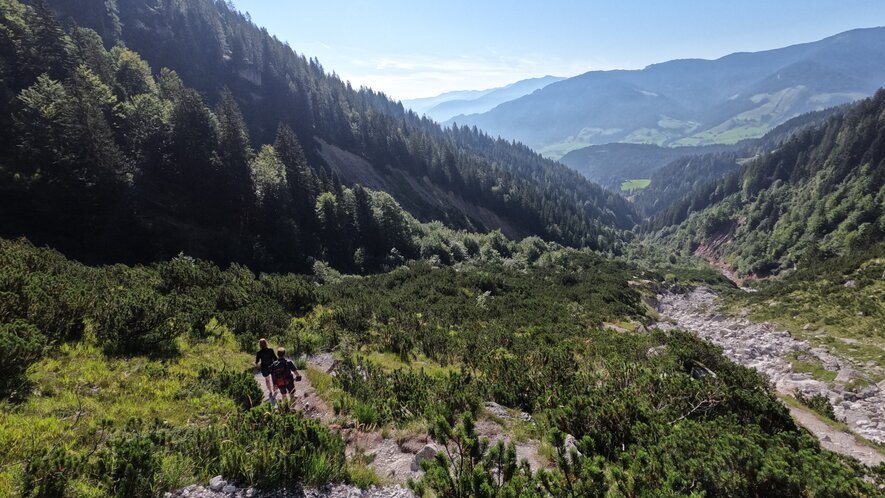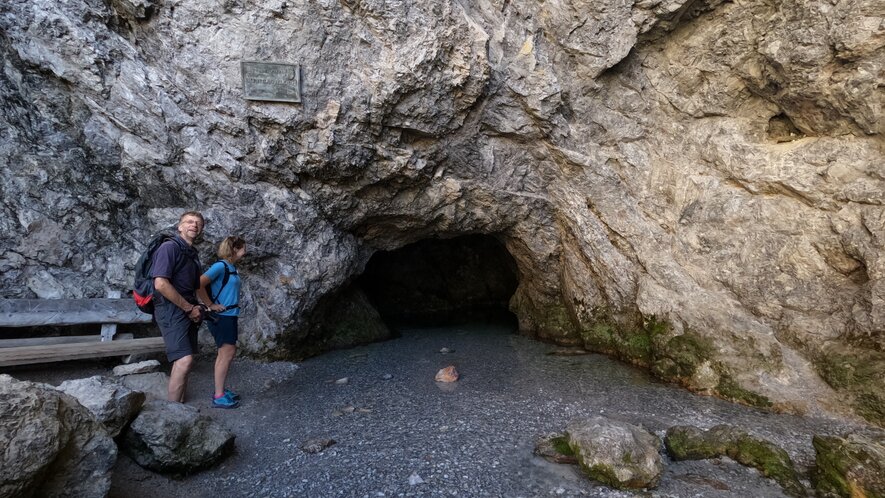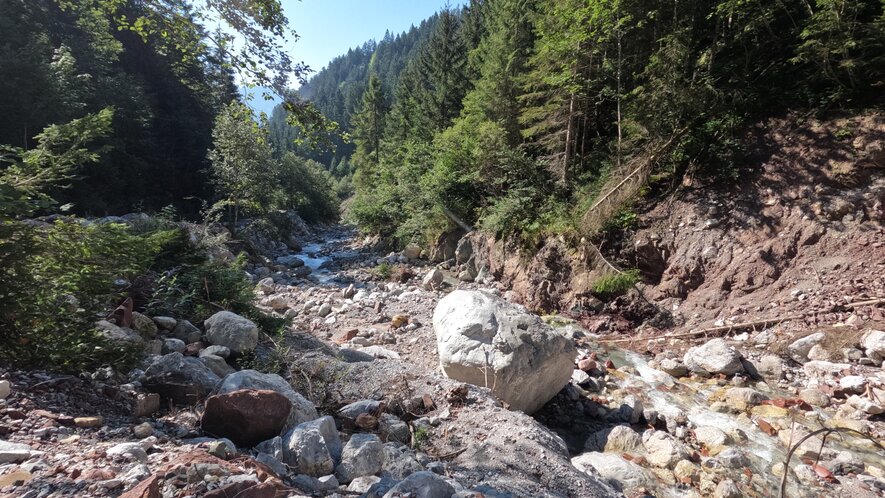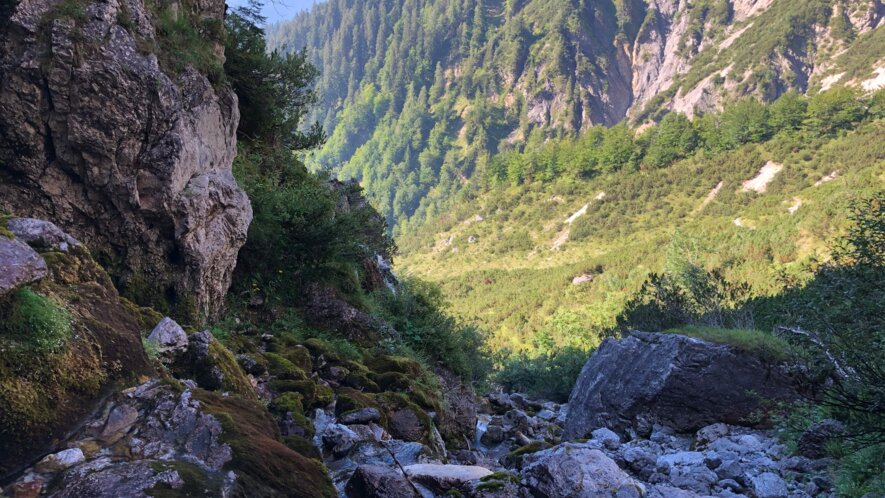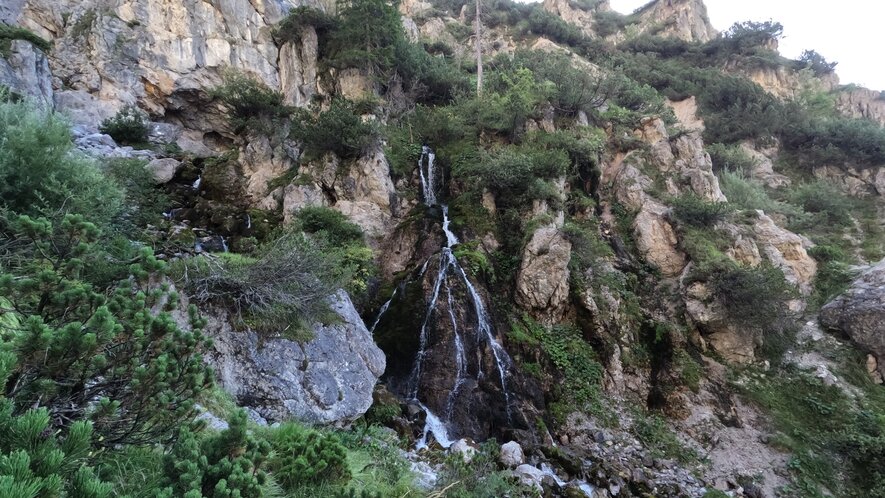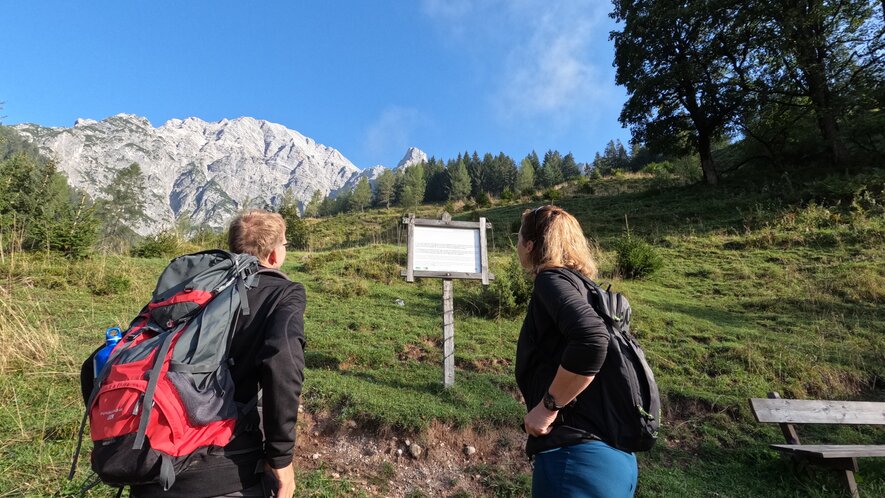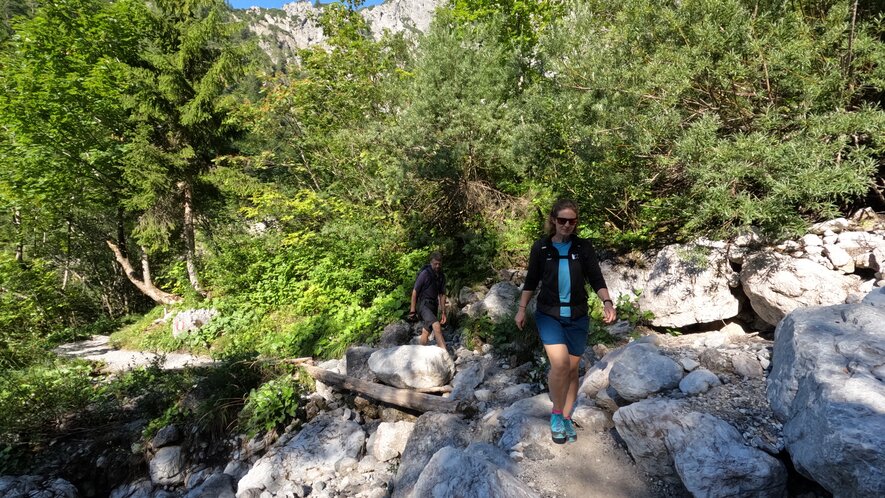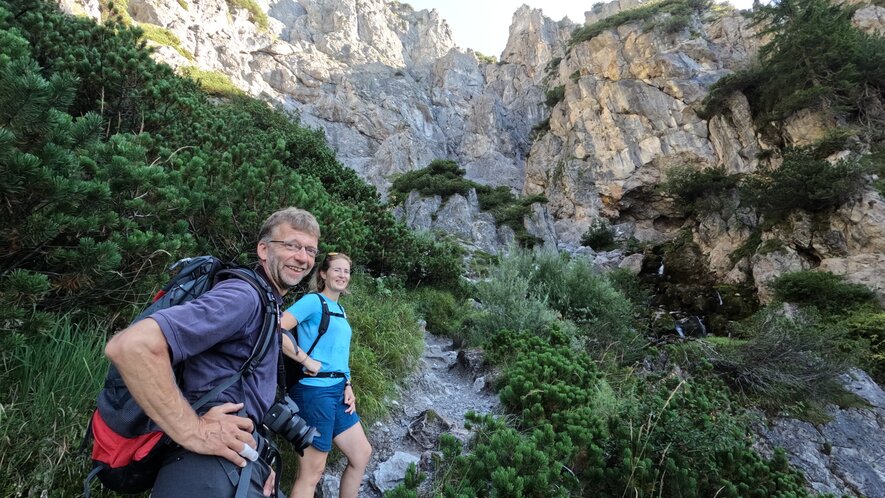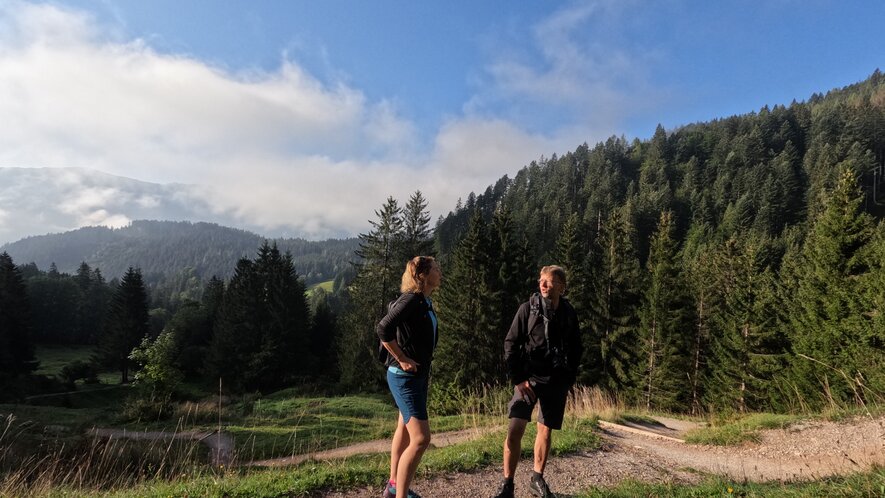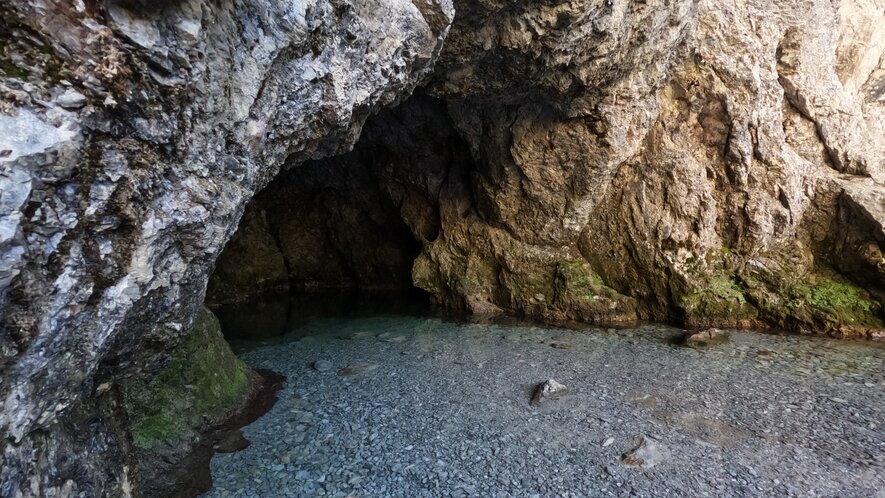Climate hike to the Birnbachloch cave
We are aware that nature is constantly changing. With our own eyes we can observe how the climate influences these changes - if someone shows them to us. On the "Nature & Climate Hike", our guide Carmen shows you what to look out for and what impacts these changes has on nature.
Hiking with eyes wide open
For a long time, experts were ignored when they preached climate change. Fortunately, that time is now over and the awareness about something having to change is growing. An important part of this mindset is to see how nature is changing due to the climate. And what better way to observe nature than on a hike? On the Nature & Climate Hike, the issues can be spotted as you observe the traces of climate change in nature. This does not mean that we will become climate experts on this hike, but we will satisfy our curiosity and find one or two answers to our questions. The morning hike is also a good opportunity to take time to reflect on our own routines and perhaps bring more awareness into everyday life.
The signs of nature
The Nature & Climate Hike takes us to the Birnbachloch cave in Leogang. Together with Carmen, we start at eight a.m. at the hikers' parking lot in the Ullachtal valley. After just a few metres we already see the first traces of change. The Birnbach itself is only a small stream today, and you cannot see how powerful it usually is when the snow melts or during heavy rainfall. The stream bed, on the other hand, speaks for itself: it is full of debris and gravel as well as uprooted trees that the stream washes up here. All this is a sign of climate change. Why? The increased temperatures in summer - the 25-degree mark has already been exceeded three times more often than it was 50 years ago - are causing increased glacier melt. The meltwater makes the stream wider, carries more water and sweeps more material with the stream into the valley.
The forest
Soon we enter a beautiful forest. Carmen points out that most of the trees in the forest are spruces. This has to do with reforestation, because spruces grow quickly in our latitudes and are excellent for wood processing. But they also have their weaknesses. For example, spruces are shallow-rooted. This means that their roots do not reach very deep, and during longer periods of drought the trees therefore dry out easily. This makes them susceptible to the bark beetle. They also have less grip in the soil. As a result, they are more easily uprooted during heavy rainfall and washed away by the stream.
The tranquillity of nature and a special place of spiritual energy
Of course, the hike is far from over. It will still take us to the destination, the Birnbachloch cave. We will pass the Birnbachloch glacier, the lowest located in Central Europe. We will learn why the glacier was once very important for Bavarian beer brewers. But the hike is so much more than facts and figures about the climate. During the hike I was embraced by a fascinating calm - almost comparable to a yoga flow. At the natural cave of Birnbachloch I felt a special and indescribable spiritual energy that made the spring in the middle of the Leoganger Steinberge a quite special place for me. I do not know whether it is the ice-cold water, the mystical depth of the water inside the unknown cave system or the cave-like entrance to something bigger. Maybe it is a combination? But one thing is sure, I will definitely visit this place again.



